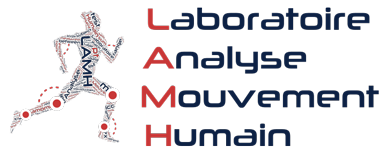Performance in tennis serve
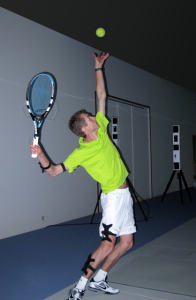 Investigators: F. Tubez (LAMH), C. Schwartz (LAMH), B. Forthomme (LAMH-Sciences de la motricité), J.L. Croisier (LAMH-Sciences de la motricité), Gilles Berwart (LAMH)
Investigators: F. Tubez (LAMH), C. Schwartz (LAMH), B. Forthomme (LAMH-Sciences de la motricité), J.L. Croisier (LAMH-Sciences de la motricité), Gilles Berwart (LAMH)
This topic aims to develop an original research concerning tennis serve. In particular, we define a special 3-D protocol to assess the serve of tennis player. In the study of 3-D and 2-D (video) analysis of different tennis serves, we will define the motion pattern and the motion sequences require for the best serves. We will assess some of the best Belgium tennis players into our laboratory. The results of those evaluations will give important information to the coach and to the player for serving performance.
Biomechanics of running economy
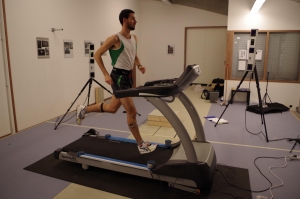 Investigators: D. Deflandre (Sciences de la motricité), C. Schwartz (LAMH), T. Bury (Sciences de la motricité), J.L. Croisier (LAMH-Sciences de la motricité)
Investigators: D. Deflandre (Sciences de la motricité), C. Schwartz (LAMH), T. Bury (Sciences de la motricité), J.L. Croisier (LAMH-Sciences de la motricité)
Running economy and fatigue generate a lot of interest in the follow up of middle-distance to distance runners. The biomechanics of stride is also the focus of many researches. In the Laboratory for Human Motion Analysis we explore the potential biodynamic effect of fatigue and the possible relationship with physiological parameters as running economy and VO2 max. To explore this area, the laboratory host efficient equipment for scanning stride in 3D and 2D in running sessions from sprint to endurance. The collaboration with the Sports Physiology Laboratory permits the combination of the two disciplines.
Shoulder fatigability
Investigators: B. Forthomme (LAMH-Sciences de la motricité), C. Schwartz (LAMH), C. Horobeanu (Aspire Academy)
Volleyball is a very popular sport around the world offering spectacular actions in which the points are won, usually, as a result of a rapid and powerful overhead spike. The speed and accuracy of this shot is mostly provoke by the shoulder muscles, internal and external rotators. As this actions is repeated over and over during the training and matches situation it has been hold responsible for different shoulder injuries especially in the muscular fatigue state.
The aim of present project is to investigate to what degree a decrease in the spike speed, assumed to be a result of fatigue, influences different muscular performances (isometric strength, muscle activation) and alter the movement execution.
During the experiment numerous data will be collected in an innovative way combining 3D movement analyses, EMG outcome, muscles strength assessment and subjective reported fatigue levels.
Influence of fatigue on line-out biomechanics in rugby
Investigators: J. Paulus (LAMH), C. Schwartz (LAMH), A. Laly (Belgian Rugby League), J-L. Croisier (LAMH & Motricity sciences)
This study will explore the biomechanics modification of the line-out in rugby following a progressive induction of fatigue which simulates the cognitive and physiological demands of a rugby game. This analysis is carried out with international hookers (seniors and juniors). The ultimate objective is to identify the parameters impacted by fatigue and subsequently to evaluate the effectiveness of training strategies.
Influence of β-alanine supplementation on fatigue
Investigators : J. Paulus (LAMH), C. Schwartz (LAMH)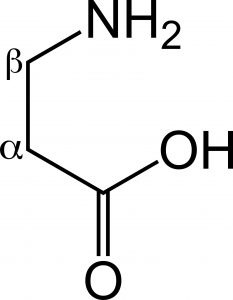 , N. Paquot (CHU of Liège – Diabetology, nutrition, metabolic diseases), J.-F. Kaux (CHU of Liège – SPORTS²), A. Scheen (CHU of Liège – Diabetology, nutrition, metabolic diseases), L. Stevens (CHU of Liège – SPORTS²), J.-L. Croisier (LAMH & Motricity sciences)
, N. Paquot (CHU of Liège – Diabetology, nutrition, metabolic diseases), J.-F. Kaux (CHU of Liège – SPORTS²), A. Scheen (CHU of Liège – Diabetology, nutrition, metabolic diseases), L. Stevens (CHU of Liège – SPORTS²), J.-L. Croisier (LAMH & Motricity sciences)
The β-alanine, amino acid precursor of carnosine, has been studied on numerous occasions without, however, reaching an absolute consensus on its influence on performance. We aim to refine the knowledge of its impact on maximum performance in prolonged jump events.
Development of an innovative test based on repeated jumps to study neuromuscular fatigability
Investigators: J. Paulus (LAMH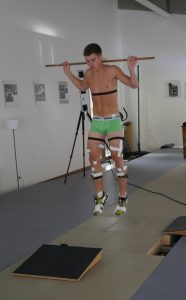 ), C. Schwartz (LAMH), J.-L. Croisier (LAMH & Motricity sciences)
), C. Schwartz (LAMH), J.-L. Croisier (LAMH & Motricity sciences)
Fatigue induction tests are numerous but rarely specific to sports where the ability to repeat intense jumps is a determinant of performance (basketball, volleyball, etc.). Our goal is to develop a valid, reproducible and easy-to-set test to explore athlete’s ability to resist fatigue during jumping.
Influence of fatigue on sprint capabilities in soccer
Investigators: J. Paulus (LAMH), C. Schwartz (LAMH), J.-L. Croisier (LAMH & Motricity sciences)
The aim of this study is to compare the fo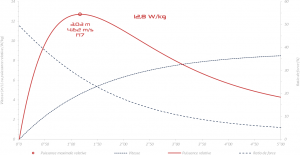 rce-speed-power-sprint profiles in soccer player before and after a fatigue induction protocol simulating the demands of a game.
rce-speed-power-sprint profiles in soccer player before and after a fatigue induction protocol simulating the demands of a game.
Injury prevention: shoulder stiffness in high-level athlete populations
Investigators: B. Forthomme (LAMH-Sciences de la motricité), C. Schwartz (LAMH)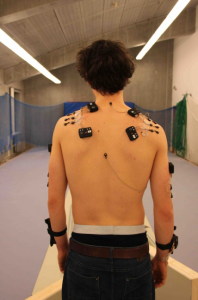
Athletes, who practice intensively a sport involving the upper limb, risk developing shoulder stiffness. The aim of this project is to study the influence of shoulder stiffness on scapula mobility and more generally on the glenohumeral joint. In this study, three populations are compared: sedentary subjects, healthy athletes and finally athletes with shoulder stiffness. The effect of reeducation protocols such as shoulder stretching is then evaluated in order to limit the risk of injury.

